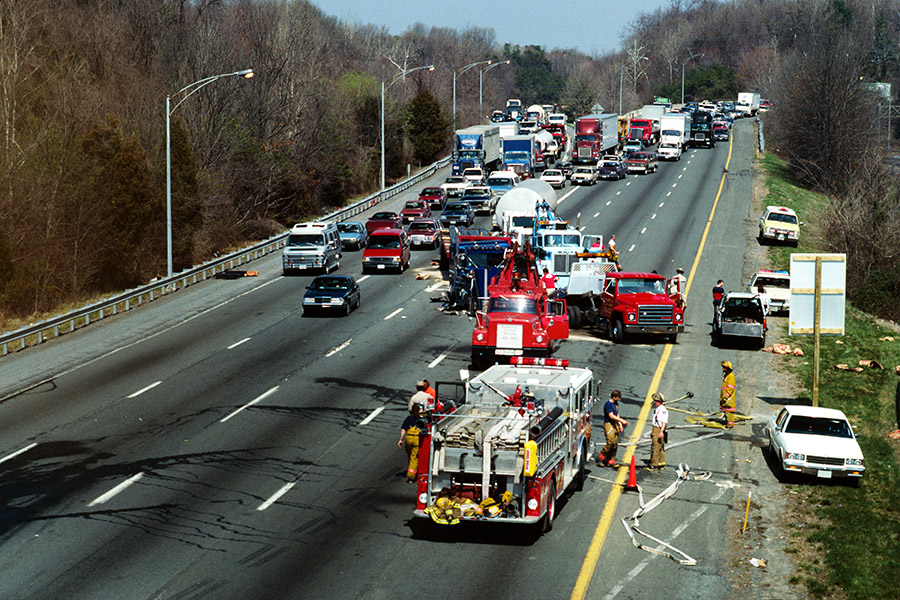December 14, 2023
Social and Economic Inflation Drive Up Auto Liability Claims

Combined U.S. personal and commercial auto insurer liability claim payouts were $96 billion to $105 billion higher between 2013 and 2022 because of social and economic inflation, according to a new Insurance Information Institute (Triple-I) study.
For personal auto liability insurance, increasing inflation drove loss and DCC (defense containment costs) higher by $61 billion,” the study said. “For the same period (2013-2022), increasing inflation drove commercial auto liability loss and DCC higher by $35 to $44 billion.”
Liability insurance covers what the policyholder is legally obligated to pay because of bodily injury or property damage caused to another person, or persons. Every U.S. state except New Hampshire requires its drivers to purchase a personal auto insurance policy, with mandatory minimum amounts of liability coverage, as a condition of operating a motor vehicle. Commercial auto insurance liability policies are commonly bought by small businesses and corporations to cover trucks and other vehicles used for commercial purposes, such as limousines and taxis.
Economic inflation is measured in the study as the Consumer Price Index (CPI) – All Urban metric, a U.S. Bureau of Labor Statistics benchmark, whereas social inflation indicates how insurer claim payouts exceed the CPI.
What Is Social Inflation?
Unlike general economic inflation, which insurers can mitigate using pricing models and loss reserves, social inflation can arise from factors that are difficult to foresee, such as rising costs from:
- increases in the number of outsized jury awards
- legal proceedings that take longer than reasonably expected
- rollbacks in tort reform that overturn statutory limits on non-economic damages.
Considered to be a growing cost of doing business in the insurance industry, social inflation is influenced by negative public sentiment about larger corporations, litigation funding, and tort reform rollbacks at the state legislative level, all of which have increased liability costs. Shifting public perceptions and attitudes may lead jurors to sympathize with plaintiffs when awarding damages. Jurors may also believe the business, or the insurance company, has unlimited financial resources, leading to what’s commonly known as “shock” verdicts. These monetary damage awards are much higher than expected based on the evidence presented at trial, often exceeding $10 million.
Personal and Business Auto Liability
“The business of personal auto liability insurance is also many times larger than commercial auto. Personal auto liability had $152.6 billion in net earned premiums in 2022, four times as much as commercial auto liability,” the study stated. Yet personal auto policyholders typically have $100,000 or less in liability coverage while a typical commercial policyholder has a coverage limit of $1 million, the study explained. Supported by detailed analyses of claims payouts dating back years, the study concluded that, for personal auto liability insurers:
- Losses have been growing faster than premiums in recent years
- Since Accident Year 2020, standardized losses rose 15 percent while standardized premium fell 13 percent
- Severity, the size of losses, increased dramatically after 2019
The study concluded that commercial auto liability insurers saw:
- Losses grow faster than the overall economy
- Social inflation as a primary influence on these losses prior to 2021
- The average size of loss — claim severity — increase dramatically since 2020
“For both personal and commercial auto liability lines, social inflation was the main source of increasing inflation before 2021. For 2021 and later, increasing inflation came from a combination of economic inflation and social inflation,” the study said.
The study, “Impact of Increasing Inflation on Personal and Commercial Auto Liability Insurance,” was researched and written by Jim Lynch, FCAS, MAAA, Triple-I’s former chief actuary; Dave Moore, FCAS, MAAA, president, Moore Actuarial Consulting LLC; and Dale Porfilio, FCAS, MAAA, Triple-I’s chief insurance officer. The research methodology compares the latest loss development patterns to a baseline assumption without social inflation and with stable inflation rates.
